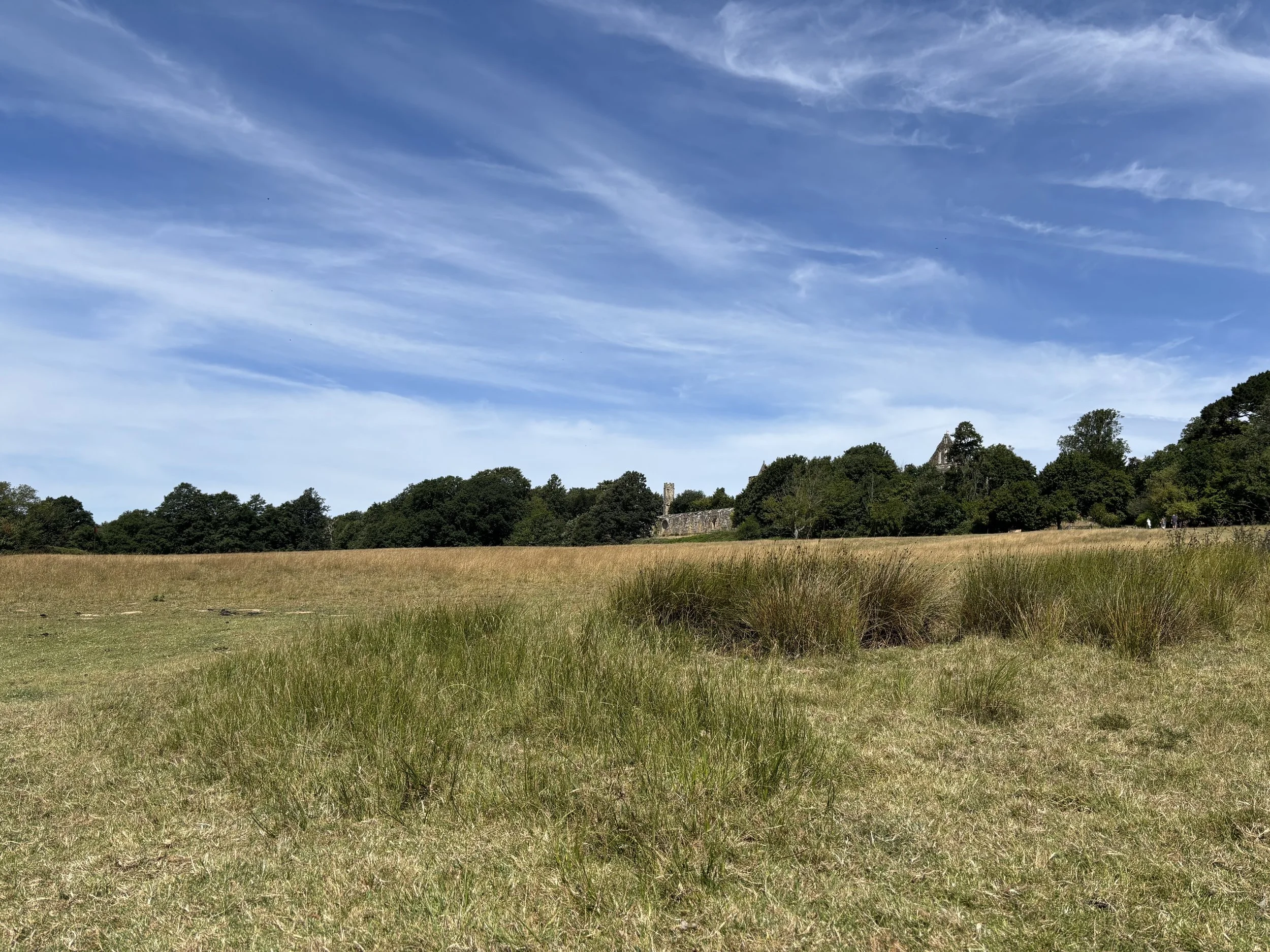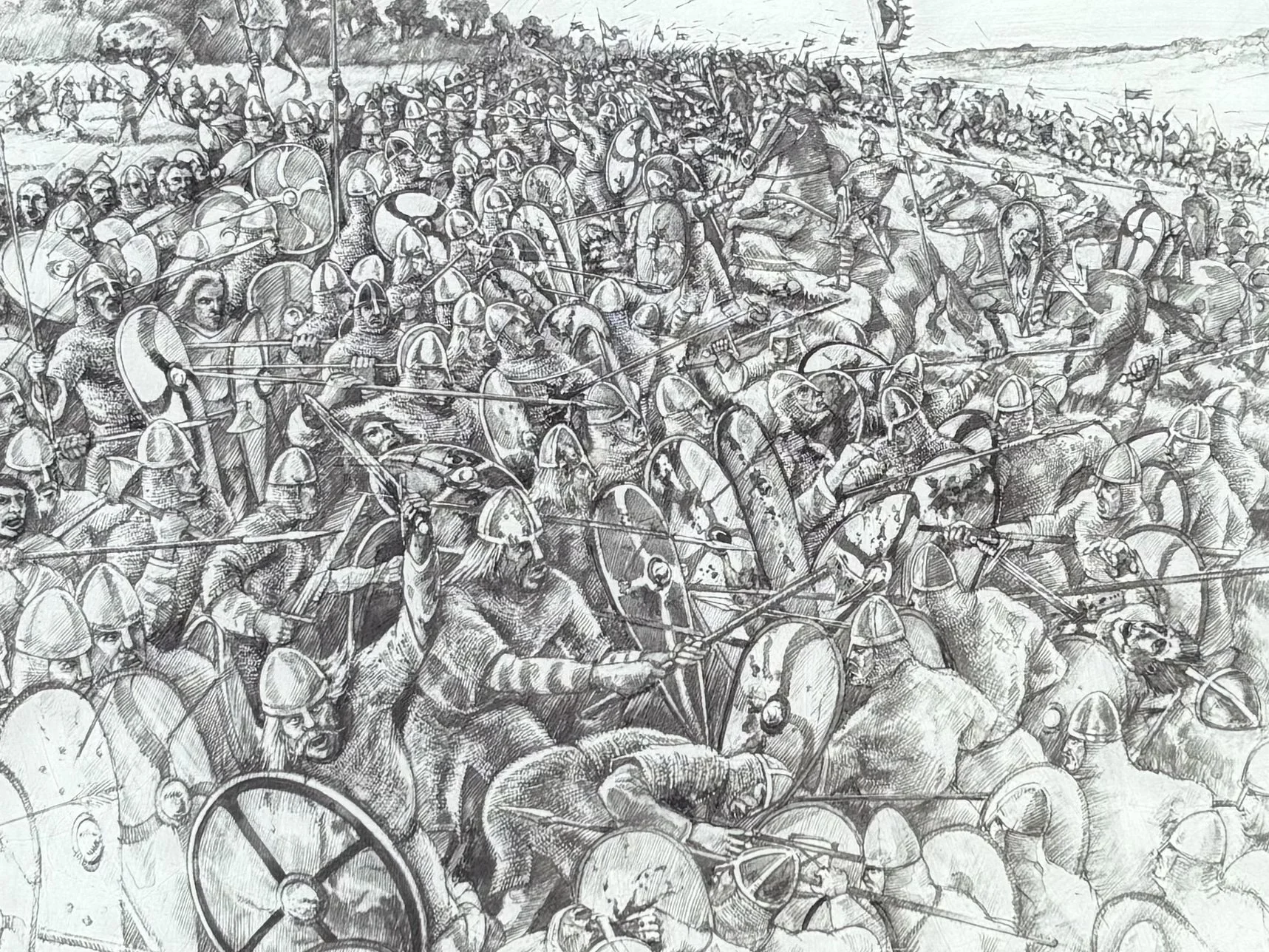Walking the Ground at Battle Abbey — A Birthday Pilgrimage to 1066
I spent my 39th birthday in one of the most fitting places for a history-obsessed miniature painter: Battle Abbey, East Sussex. I checked into the Abbey Hotel—right opposite the abbey itself—dumped my bag, and headed straight out to walk the field where England changed forever.
Breakfast time and a view of my hotel opposite.
What followed was a day of sunshine, steep stairs, shield walls, and a pint with a view. Here’s the story, some reflections on the fight, and a peek at my Forged in Battle 15mm Normans—plus what’s coming next with an Anglo-Saxon army (and a collaboration with Dean and Conor).
The Battlefield Walk
English Heritage have done a great job threading a route around the site, with listening points that step you through the day: how the armies formed up, why their equipment was broadly similar, and where the real differences bit—the Saxon huscarls with their fearsome axes, and the simple, era-defining fact that the English fought on foot while Normans brought cavalry.
You can still feel the geometry of the fight under your boots. The slope where Harold’s line stood has been softened over time, and trees now fringe what would have been the Norman left (it’s hard to imagine them there in 1066), but the essential problem remains once you put yourself in a Norman saddle: you are looking up at a wall of shields.
The Saxon line would have been positioned where the Abbey stands today.
I kept returning to the same thought: how did William end up at the bottom of the hill? He was in the area first. He scouted. He saw Harold coming. Yet there he is, staring up at the ridge. Maybe Harold seized the best ground as he arrived? Maybe the practicalities of marshalling a mixed army—infantry, archers, and cavalry—pinned William to this side. Whatever the reason, the Norman day began in a hole they had to fight out of.
Inside the Abbey & Up the Tower
I went inside the abbey—worth it for the atmosphere alone—and then wound my way up the tower’s tight staircases to a small exhibit. Once you reached the top you could look out over the battlefield on one side, which lies like a shallow amphitheatre; on the other, the rather pretty little town of Battle itself, neat and ordinary, carrying on as if nothing monumental had ever happened across the road.
The audio trail kept circling back to the sheer length of the fighting. This wasn’t a quick clash on the 14th October 1066; it was hours of grind and bloodshed. You can imagine the exhaustion, the churn at the front ranks, the steady wearing-down of cohesion. Carnage is the right word.
And yes, I couldn’t help the irreverent thought: What if a bunch of guys (the Saxons) had just held their discipline and stayed on the bloody hill… History turns on the smallest human decisions.
Harolds viewpoint, looking down at the Norman army
Miniatures on the March: Forged in Battle 15mm Normans
Back at the studio, I’ve been channeling this visit into the hobby desk. My Forged in Battle 15mm Normans are painted and ready to feature alongside this post.
What’s Next: Anglo-Saxons (and a Team Project)
The plan now is to paint a late 28mm Anglo-Saxon force—shieldwall-first, with huscarls at the brutal centre.
I’m also teaming up with Dean and Conor:
Dean will paint Vikings, giving us the North Sea raiders for earlier matchups and scenario play.
Conor will tackle the Normans, so we can field big, balanced forces for demos and events.
Between us, we’ll be able to stage not just Hastings-style set pieces but the wider 11th‑century story on the tabletop—raids, skirmishes, and full battle lines. Expect photos, lists, and a few “walked-the-ground” scenario ideas later this year.
Walking the Slope
One of the most useful parts of the day was simply walking up the slope. Even flattened, it bites into your calves. Line that slope with screaming men and a wall of shields, and you start to feel why discipline and timing mattered more than any single heroic charge. It is no wonder the cavalry failed to make a decisive breakthrough in this terrain.
That, to me, is the key to victory at Hastings: tempo and discipline. If the Normans rush piecemeal, they die on the shields. If the English chase victory down the hill too far, they get ridden down. The battle punishes impatience and rewards nerve.
The Battle Of Hastings, was absolute carnage & went on all day and into the early evening.
I walked to the spot where Harold allegedly fell in battle. The narrative made a point on how England changed at this very spot. Was he killed by an arrow to the face? Or was he mercilessly cut down by a Norman hit squad? In any case, without Harold’s influence and leadership Anglo Saxon England was in deep jeopardy following his demise.
Miniature diorama from the local Battle Museum, close to Battle Abbey.
A Pint with a View
I ended the day exactly where I started it—at the Abbey Hotel, pint in hand, the abbey stones glowing in the evening sun. It’s hard to beat that for a birthday: good weather, a walk and a climb through history, and a front-row seat to the field that reconfigured England forever.
If you’re into the same mix I am—walking the ground and then bringing it to life in miniature—Battle Abbey is a gift. Photos of the 15mm Normans feature in this blog, and the 28mm Anglo-Saxons are coming soon. I’ll rope Dean and Conor in for a proper Normans vs Saxons vs Vikings showcase once the shieldwall is ready and eventually get some revenge for the Saxons!
Until then, hold your nerve, stay on the hill, and I’ll see you at the next one!
Matt

















